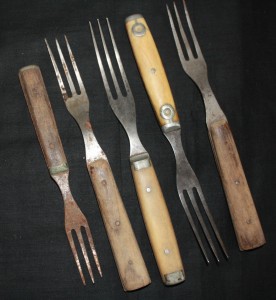 That’s kind of how I feel about today – Valentine’s Day. Not that I don’t tell the people I love that I love them and not that I don’t believe in love, it’s just over-priced, over-hyped and over-rated if you ask me. I instructed my husband if he was thinking of getting me flowers to save his money and buy me something other than roses on a day other than Valentine’s Day. A little cynical, yes? Sorry.
That’s kind of how I feel about today – Valentine’s Day. Not that I don’t tell the people I love that I love them and not that I don’t believe in love, it’s just over-priced, over-hyped and over-rated if you ask me. I instructed my husband if he was thinking of getting me flowers to save his money and buy me something other than roses on a day other than Valentine’s Day. A little cynical, yes? Sorry.
Another tradition on Valentine’s Day is a big, fancy dinner which also comes with about an hour wait. My husband also knows that lack of sustenance makes me crabby – it’s an inherited trait from my father. Really, it is.
Which brings me to the point of this post. These are bone-handled forks. Isn’t it a little ironic to eat a juicy steak with a bone-handled fork made from cow horns? Maybe not ironic, but a little funny if you ask me. They truly did use every part of the animal back in the day.
These are not dishwasher safe. And Happy Valentine’s Day, even if you’re a cynic like me.
Until we walk again …

 The
The  “We are thrilled that more and more growers and industry professionals recognize the value of attending Commodity Classic,” said Commodity Classic co-chair Martin Barbre. “Agriculture is both an exciting and challenging way of life. Because Commodity Classic addresses farming from a grower’s perspective, attendees find they can take information they’ve gathered from the show and put what’s practical for their operations into the field.”
“We are thrilled that more and more growers and industry professionals recognize the value of attending Commodity Classic,” said Commodity Classic co-chair Martin Barbre. “Agriculture is both an exciting and challenging way of life. Because Commodity Classic addresses farming from a grower’s perspective, attendees find they can take information they’ve gathered from the show and put what’s practical for their operations into the field.” One of the touchiest topics for cattle producers at the recent Cattle Industry Convention was last year’s bankruptcy of MF Global, which cost many of them money they have yet to get back.
One of the touchiest topics for cattle producers at the recent Cattle Industry Convention was last year’s bankruptcy of MF Global, which cost many of them money they have yet to get back. 
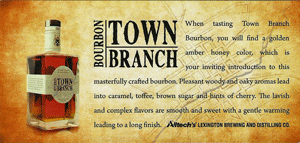

 In this week’s ZimmCast you can hear about how
In this week’s ZimmCast you can hear about how  At the NCGA biennial Membership Symposium last week in Florida, Chuck talked with Director of Development Tim Brackman and
At the NCGA biennial Membership Symposium last week in Florida, Chuck talked with Director of Development Tim Brackman and 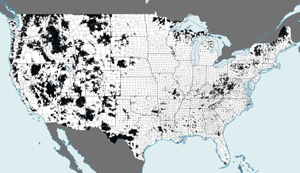

 In the national 2011 NCGA Yield Contest, BASF Crop Protection products helped to capture three first-place finishes, four second-place finishes and three third-place finishes. Headline AMP was overwhelmingly the fungicide of choice, helping yield four of the top five overall national winners.
In the national 2011 NCGA Yield Contest, BASF Crop Protection products helped to capture three first-place finishes, four second-place finishes and three third-place finishes. Headline AMP was overwhelmingly the fungicide of choice, helping yield four of the top five overall national winners.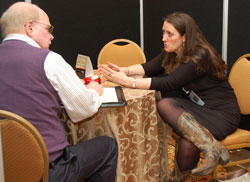 Contrary to popular belief, eating beef is not bad for the environment and Dr. Jude Capper with the Department of Animal Sciences at Washington State University has
Contrary to popular belief, eating beef is not bad for the environment and Dr. Jude Capper with the Department of Animal Sciences at Washington State University has 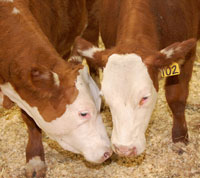 American consumers have never had a safer supply of beef, but there’s always room for improvement, according to Dr. Guy Loneragan, professor of food safety and public health at Texas Tech University,
American consumers have never had a safer supply of beef, but there’s always room for improvement, according to Dr. Guy Loneragan, professor of food safety and public health at Texas Tech University,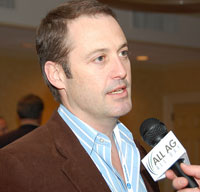 Guy says that there are several ways producers can do even more to avoid problems on the pre-harvest level. “The first thing I would say is for producers to stay engaged and be engaged, because knowledge is a very powerful weapon,” he said. “Beyond that, the industry has invested quite heavily into the development of several promising controls, like pro-biotics – the beneficial bacteria we find in yogurt, some strains appears to be quite effective in cattle too.”
Guy says that there are several ways producers can do even more to avoid problems on the pre-harvest level. “The first thing I would say is for producers to stay engaged and be engaged, because knowledge is a very powerful weapon,” he said. “Beyond that, the industry has invested quite heavily into the development of several promising controls, like pro-biotics – the beneficial bacteria we find in yogurt, some strains appears to be quite effective in cattle too.”